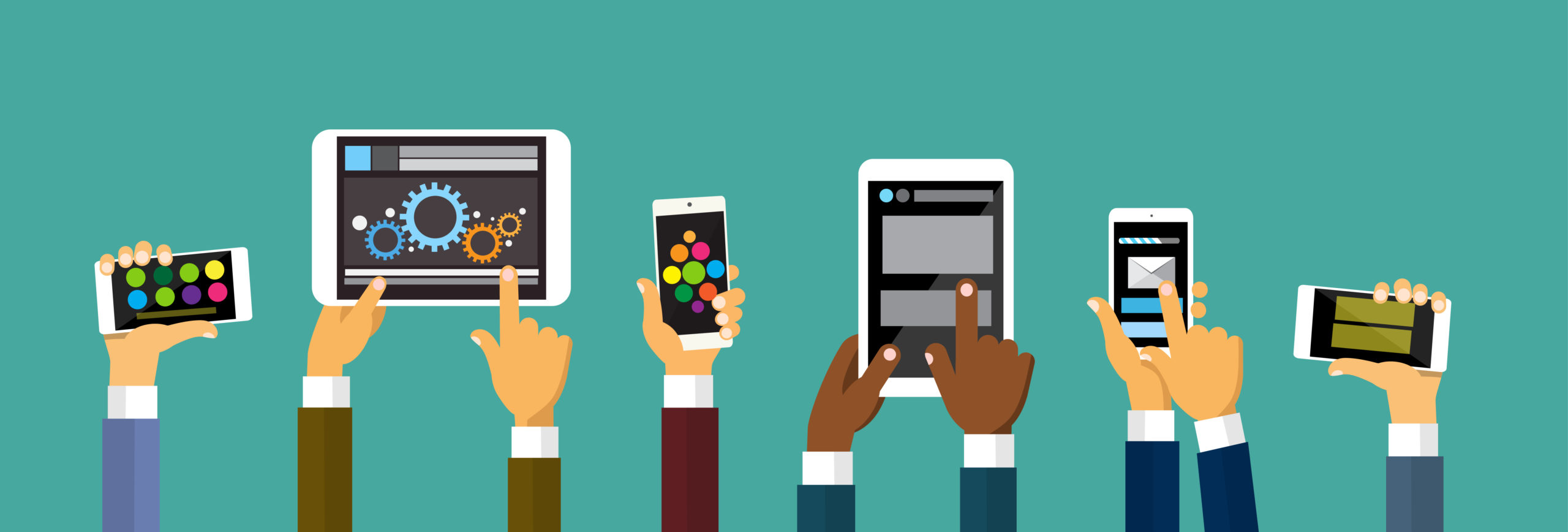
It’s budget season. For many executives, it’s an especially challenging and difficult time of the year.
Will there be investments? Will there be cuts?
For much of 2022 – a year of unknowns – there are some big decisions on the table. We know that a key call is where to invest a station’s (or a company’s) human and financial resources. The beauty of being a multi-platform brand is the ability to make strategic shifts that are most financially propitious and efficacious.
Those are over-the-top, $10 words that add up to this:
Follow the money.
Last week, BIA published your road map – a local revenue TripTik that points in the most advantageous direction. Speaking to Inside Radio, Mark Fratrik – BIA’s Senior VP/Chief Economist – notes how mobile ad spend will pass direct mail for the first time next year. At more than $34 billion, mobile leads the top 5 media categories:
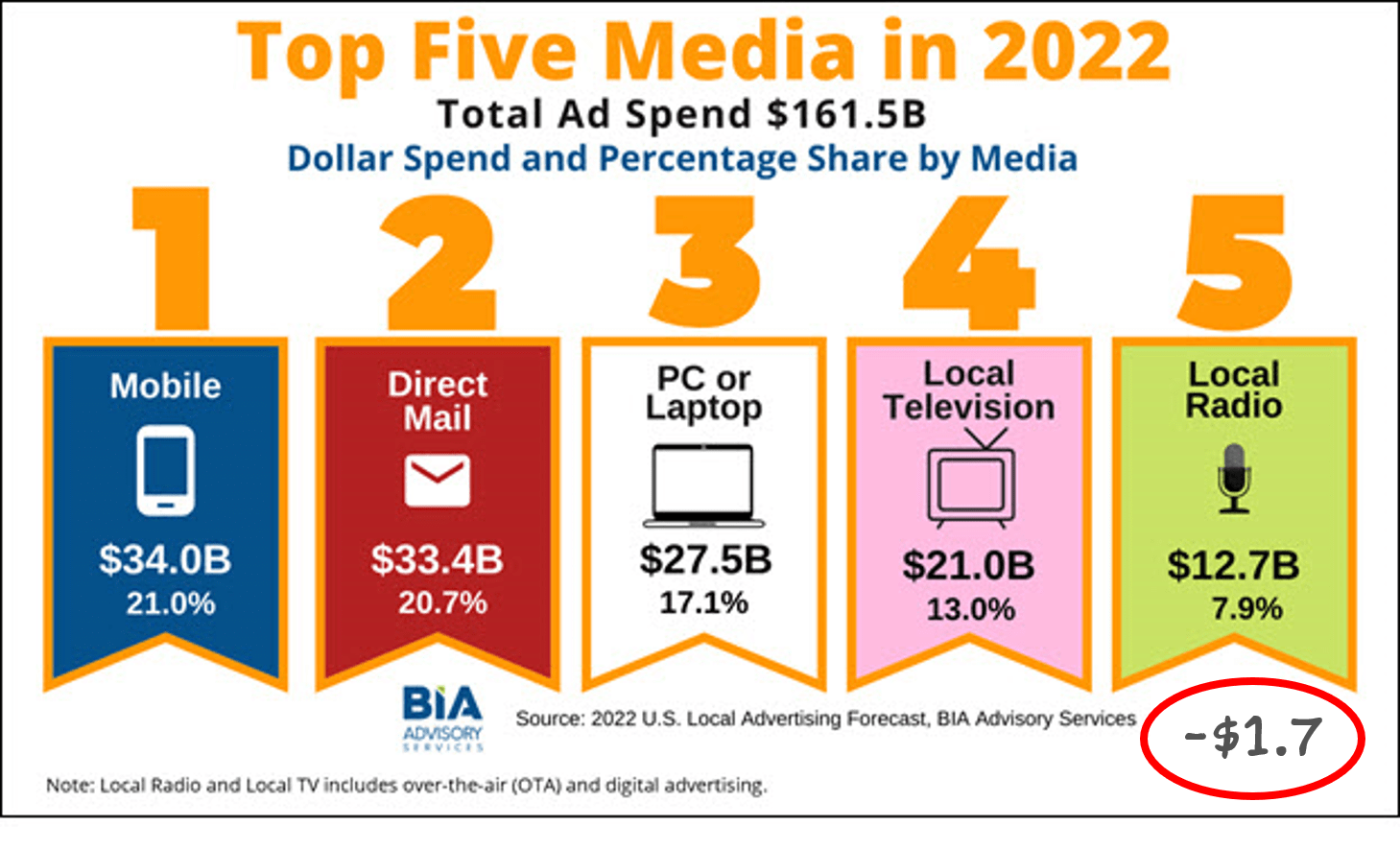
If you saw this chart in Inside Radio, you may note my version is a bit different. It turns out I’m not the only one who can whip out a Sharpie to amend a chart. That’s because BIA’s local radio revenue projection of $12.7 billion is actually split between over the air revenue ($11 billion) and digital ($1.7 billion).
Therefore, if you compare mobile to OTA radio broadcasting (minus the digital which duplicates some mobile revenue), you’re looking at more than a 3x advantage for mobile ad dollars.
And that takes us back to yesterday’s post about how The New York Times is doubling down on audio – placing their chips on a standalone app.
That’s right. The strategists at The Times have reasoned that cramming all their great audio content into the brand’s main app misses a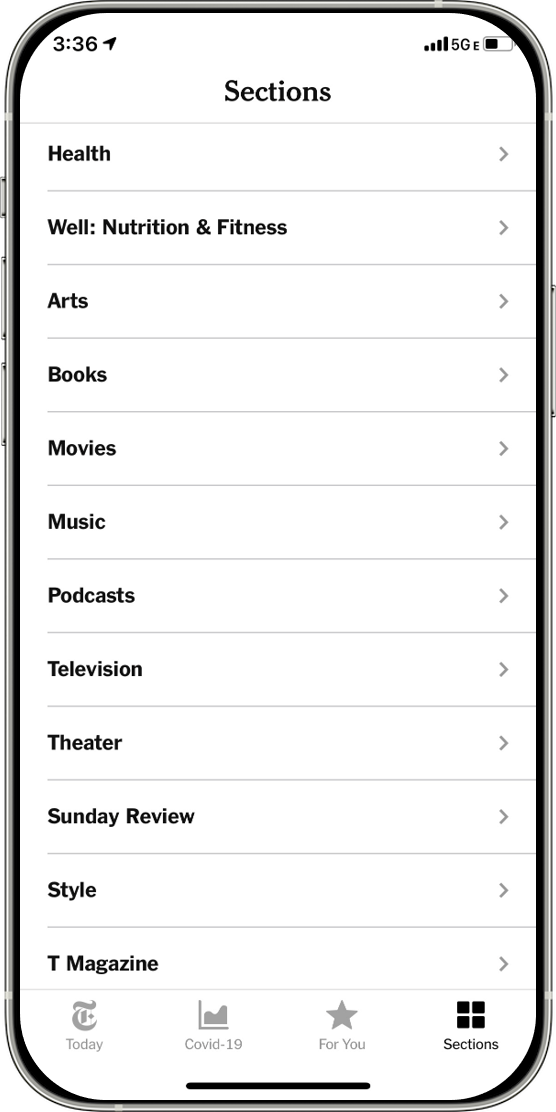 golden opportunity to not only monetize a dedicated app, but also to simply and effectively market its audio content.
golden opportunity to not only monetize a dedicated app, but also to simply and effectively market its audio content.
Why would you want some of your best stuff to potentially get lost amid all the other content in The New York Times’ aggregated app – obituaries, games, parenting, home delivery, and the many other sections?
Good luck trying to find podcasts on the company’s aggregated app (pictured right).
That the bottom line assessment of Sam Dolnick, assistant managing editor of The Times:
“You could spend hours a day on our home page and read seemingly everything that our newsroom produces and not come across much of our audio. That has increasingly felt odd to us.”
Stephanie Preiss, VP of TV and audio for The Times, echoes Dolnick’s sentiment:
“(The audio content is) there, but it’s not a central or signature part of what we present to you. That’s out of sync with how we have scaled and grown our audio journalism over the last several years.”
The Times thinks they have a better idea. Rather than having its great audio programming and features languishing on a content-heavy, bloated app, a dedicated mobile experience is where they’re heading. And because you don’t know until you actually know, they are positioning their yet-to-be-released all-things-audio app as an innovation, an experiment, a chance to try something different in the mobile space.
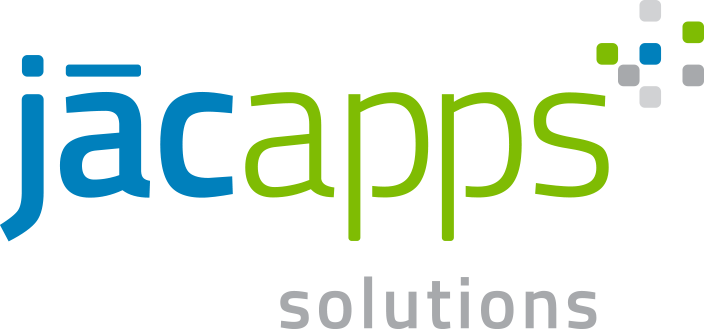 Based on our 12+ years experience with mobile app development at jacapps, The Times is on the right track. With all due respect to broadcast radio’s biggest companies and their aggregated apps, the opportunity to build stronger brands, create more content usage, and generate more local revenue is simply better with a dedicated station app.
Based on our 12+ years experience with mobile app development at jacapps, The Times is on the right track. With all due respect to broadcast radio’s biggest companies and their aggregated apps, the opportunity to build stronger brands, create more content usage, and generate more local revenue is simply better with a dedicated station app.
Great brands deserve their own apps, rather than being tethered to a parent company involved with myriad activities and content outlets.
Now, you might be thinking, “Fred, you own a mobile app company. Isn’t this more than a bit self-serving?”
And to that I would respond, our research among radio listeners has overwhelmingly favored standalone station apps. We asked this question in 2020’s Techsurvey. The results speak for themselves:
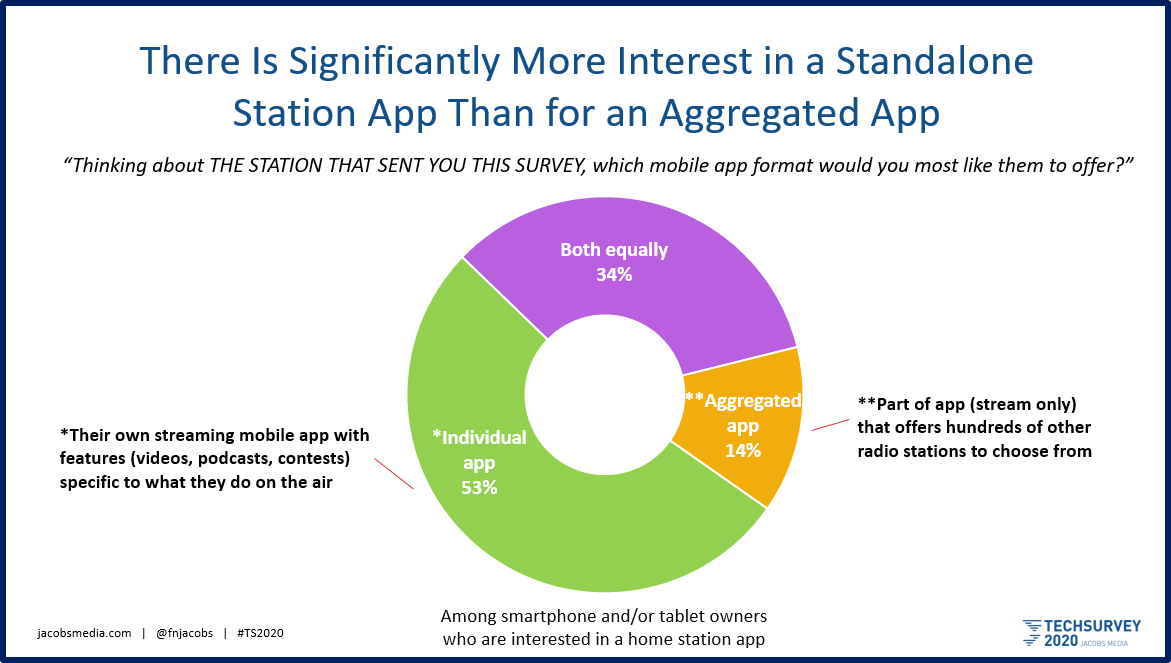
Given BIA’s mobile revenue projections for 2022 (and you’d have to think, beyond), investing in mobile – whether you’re The New York Times launching an audio initiative, a hip-hop station in D.C., or a rock station in Des Moines, building and showcasing your brand’s mobile presence is good business – for programing, sales, and the health of the brand itself.
After developing more than 1,300 apps on both the iOS (Apple) and Android platforms, I’d love to help you grow your mobile revenue. But whether you hire us or take your business elsewhere, a robust mobile presence is an imperative during a time when AM/FM radios are disappearing from home and workplaces.
There’s a strategic foundation to this new venture. The Times isn’t just beta-ing a new app – they are designing and laying out a comprehensive strategy – a standalone app.
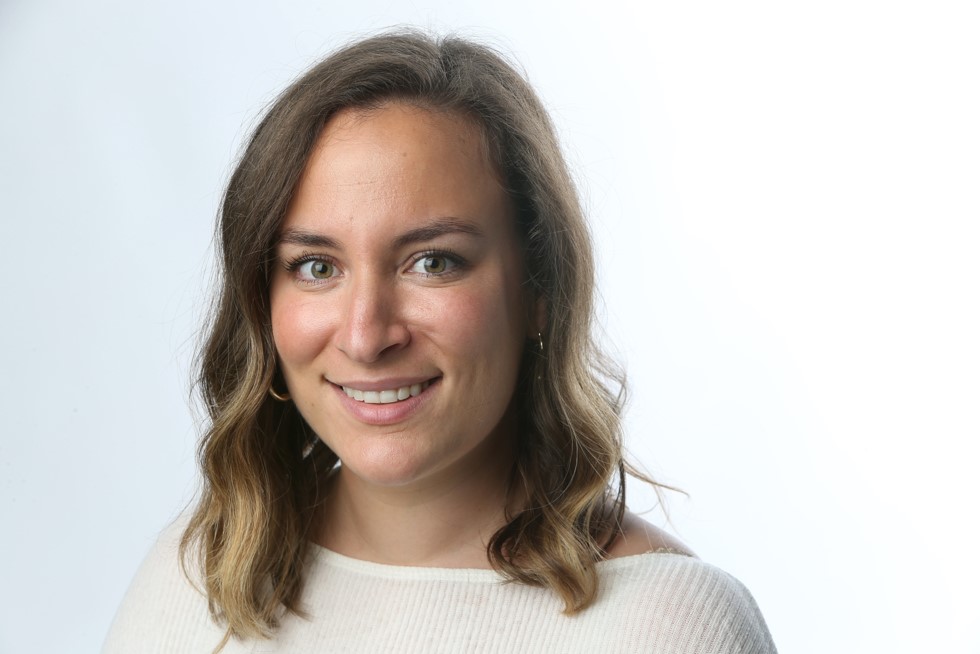
Note Stephanie Priess’ title: VP of TV and Audio. Yes, she works for a newspaper. That is, it used to be a newspaper. Today, it’s a true cross-platform success, striving to get more innovative, and thus, more successful.
The Times isn’t just checking the app box and returning to the business of publishing a daily newspaper. They are serious as a heart attack about this venture, so much so they are doing extensive research on this app: the content it carries, the data it throws off, and the advertising it generates.
Without question, they will dutifully review the metrics, while making sure the app’s analog measures – people like me who applied for the beta – are enjoying the experience.
measures – people like me who applied for the beta – are enjoying the experience.
The key to effectively tapping into the left-most box on BIA’s chart is to integrate content, marketing, and sales in a unified effort.
In so many other environments – radio included – apps are relegated to “set it and forget it” status.
Not The Times. They have 34 billion reasons to get this right.
- Why “Dance With Those Who Brung You” Should Be Radio’s Operating Philosophy In 2025 - April 29, 2025
- The Exponential Value of Nurturing Radio Superfans - April 28, 2025
- What To Do If Your Radio Station Goes Through A Midlife Crisis - April 25, 2025




It’s sill a matter of content & presentation. Digital is delivery. Radio has always been mobile, direct delivery with automotive and hand held. Radio is The Great Connector: A newspaper that talks and a TV you don’t have to see. “Build it and they will come.” Great stimulator article, Fred! Thank you, again.
Many thanks, Clark.